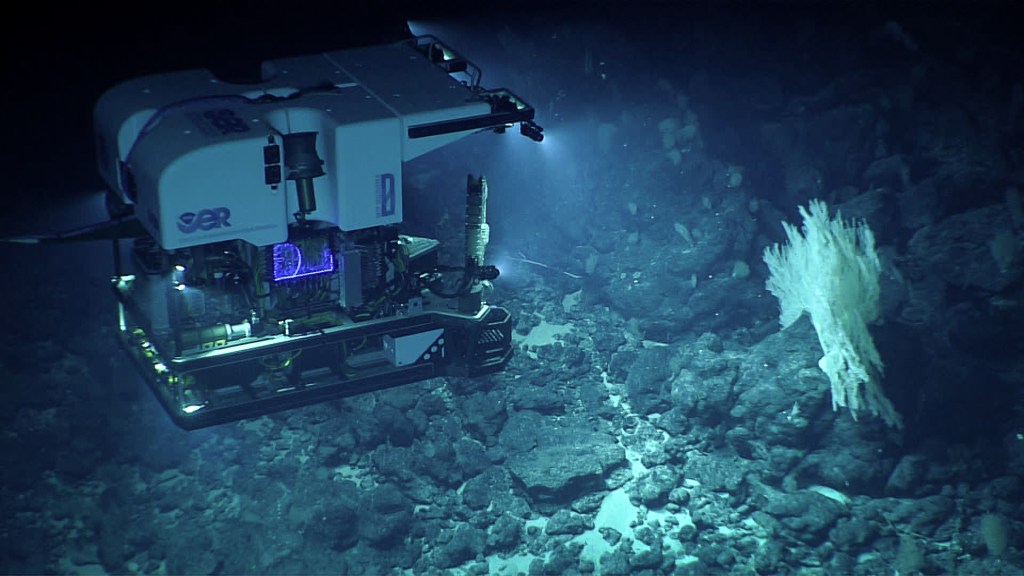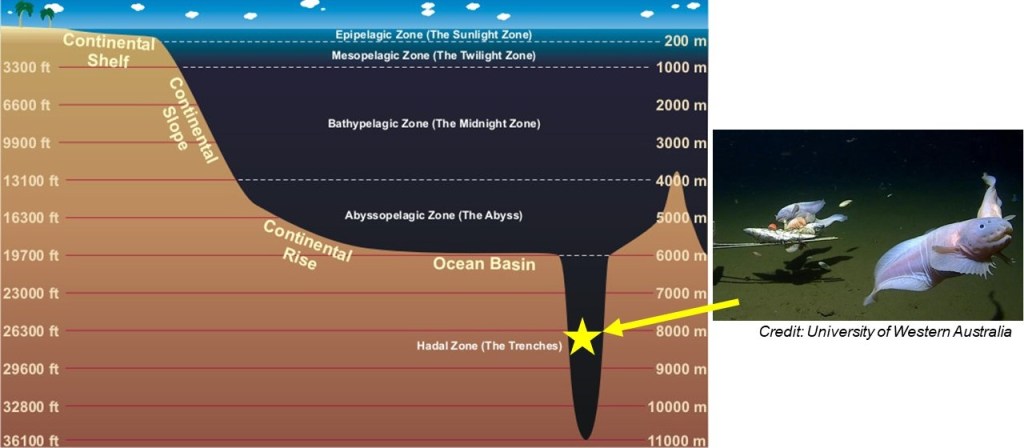Recent news about the dangers of deep-sea exploration might have made you wonder how fish and other marine animals can survive – and even thrive – in the deepest and darkest parts of the ocean. At first glance, the deep-sea environment seems almost completely inhospitable to life: little to no light, frigid temperatures, low food availability, and of course, that crushing pressure.

Granted, fish also live in places with little to no light (for example, those that live in caves such as species of blind cave-dwelling catfish), cold temperatures (Arctic and Antarctic fish like Arctic Cod), or where resources are limited. But the pressure experienced at the deepest parts of the ocean is unlike anywhere else on Earth. So how do deep-sea fish do it? What are the unique adaptations that allow them to handle the pressure?
First, a quick physics refresher: pressure in the ocean increases about one atmosphere (atm) for every 10 m (~30 ft) of water depth. At a depth of 200 m (650 ft), where the “deep sea” is sometimes considered to begin (it’s where the lack of light prevents photosynthesis), the pressure is about 20 atm or 20 times greater than the pressure experienced at sea level.

The deepest fish discovered (so far), a species of snailfish, was found at a depth of about 8,300 m, meaning it experiences over 800 times the pressure that a fish at the surface would. Some species even perform vertical diel migrations of 1,000 m – that means experiencing a 100-atm range of pressures each day!

The problem with pressure for humans is that we are full of air – all those gas-filled spaces like our lungs, ears, sinuses, and blood vessels. The pain you feel in your ears when you dive under water comes from that air being compressed. In contrast, most fish living in the deep ocean are largely made of water, which, unlike air, is incompressible. Additionally, many don’t have gas-filled organs like lungs or swim bladders and are therefore less affected by changes in pressure. Adaptations even extend to the skeletal structure, with the Mariana Snailfish, for example, having incompletely ossified (i.e., soft) bones and a non-closed skull.

At the extreme pressure of the deep sea, even your cells are under stress. Fish adaptations to pressure therefore have to take place on even the cellular level. Some deep-sea species have high concentrations of organic molecules called osmolytes in their cells which stop cellular membranes and proteins from being crushed under extremely high pressure. Studies have shown a positive relationship between the amount of one specific osmolyte (trimethylamine N-oxide, or TMAO) in an organism’s cells and the depth of its habitat.
While fish are obviously the coolest deep-sea dwellers, what about non-fish denizens of the deep? Marine mammals like the Cuvier’s Beaked Whale, for example, can dive nearly 3,000 m (10,000 ft) by completely compressing their lungs so that all the air has been expelled and essentially forced into their bloodstream and muscles. Their bloodstream and muscles, in turn, have adapted to hold more myoglobin (oxygen-storing protein) and hemoglobin.

